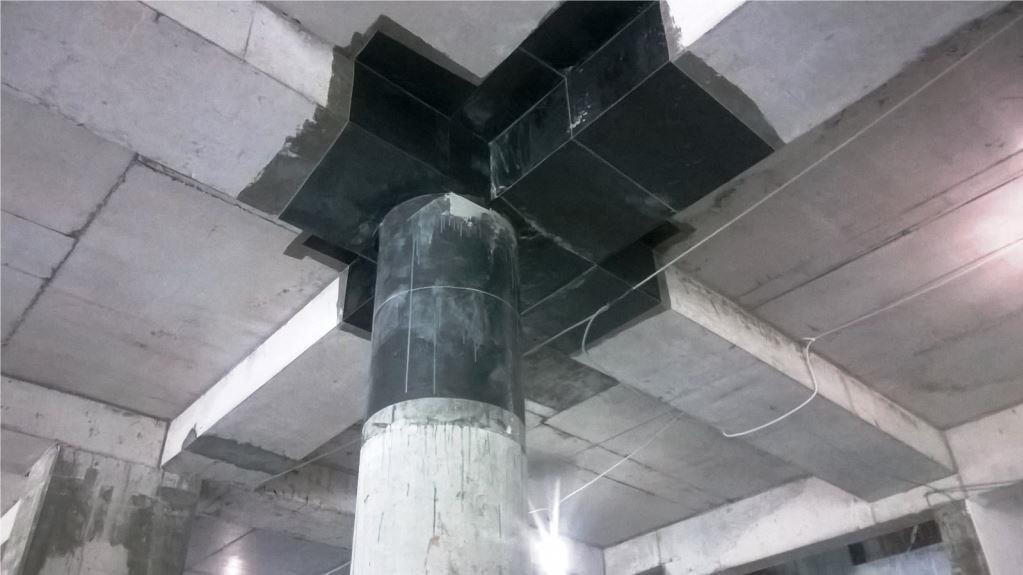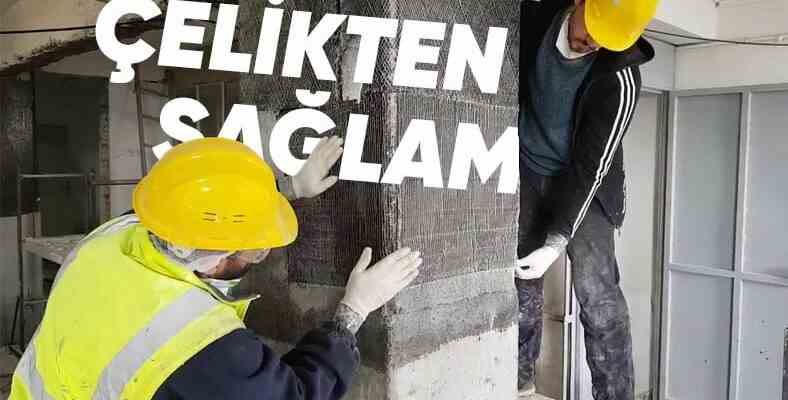After the tragedies of February 6, which left a great mark on Turkey’s history, the durability of our buildings and the contractors, as well as what our buildings were constructed from, became an important topic of discussion.
Building a solid building isn’t just about putting a few bricks on top of each other, as you can imagine. effort, attention and care a job that requires
Similarly, some of the discussion topics that took the most place on the agenda after the February 6 earthquakes, “What construction materials were used in the destroyed buildings?” And “What materials would not have happened if they were used?” discussions. However, the solution to this problem may lie in simple materials such as carbon fiber, which is a thin, materially viable and flexible construction material.
Carbon fiber, also known as “Carbon Fiber” or “CFRP”/”FRP”, is a cladding material often used in columns and beams to strengthen buildings against earthquakes.
Carbon fiber, whose main functions are to increase the load bearing capacity of the structure, to ensure its strength and to increase the resistance of the foundation against dynamic power, is applied to the parts of the same structure that are exposed to the highest weight and external forces in the form of fibrous texturing that will not increase the weight of the structure much. These selected fibrous textures are almost as thin as a shirt fabric.
Another reason for this preference is that carbon fiber fabric is more durable than solid but heavy materials such as steel. flexibility And resistivity have the advantage. In other words, it becomes a more resistant material thanks to its greater flexibility. In particular, its resistance to stretching, 14 times that of steel. To give a similar example, it is more difficult to tear a rope than to break a board. This is also due to the extra resistance provided by flexibility.
When we say “covering material”, let’s emphasize that this is indeed its function and that it is possible to strengthen structures with just such a coating.

These carbon fiber claddings, which at first seem like ordinary cladding, are used to protect the building and its parts during severe shocking disasters such as earthquakes. prevent them from moving further.
Imagine that in a very critical part of a building there is a piece of column that is not securely attached to the rest of the building. This piece will undoubtedly move during the tremors caused by the earthquake and will drop all the pieces it encounters with itself. This is because the parts that will come across are not flexible enough and are not well fixed. But the front of this piece is like carbon fiber. more flexible And more difficult to overcome If you place a material, You can make it impossible to move.
Generally in the foundations of buildings This type of coating used may also vary depending on the situation. in other parts Practical and compact enough to use. In short, it can be placed anywhere in a building when needed.
As with all other important steps in construction, good preparation is essential for smooth placement of the carbon fiber on the surface. For this, a very meticulous procedure is followed, more or less in this order:
After determining the surface of one of the round concrete pillars, book or rectangular pillars, concrete square pillars or precast concrete pillars:
- The surface on which the veneer will be placed is chipped or smoothed.
- The edges and corners of the surface, if any, are chamfered.
- Dust and small residues that emerged in the previous steps are cleaned.
- The thickness of the surface is measured and the layers below the surface are examined.
- The reinforcements of the surface are examined.
- The surface is brushed with a sticky substance.
- The carbon fiber is placed on the adhesive with great care.
The method is also famous for successfully passing robustness tests.
The above example is a study carried out at Istanbul Technical University. from earthquake simulation.
In this simulation experiment, one of two identical buildings is sheathed in carbon fiber. to both buildings 7.3 earthquake force shocking force is applied. Building covered with carbon fiber while indestructible and while it remains intact, the building, which is not covered with carbon fiber, can hardly resist. is falling apart.
Due to the strength it provides, carbon fiber coating can be used in construction with methods such as the dilatation joint method, which we have discussed in detail in the following articles, and technologies such as seismic isolator:
RELATED NEWS
These Metal Pieces We See in Big Buildings such as Shopping Malls and Parking Lot Can Save Lives During Earthquakes: So How?
RELATED NEWS
Life-Saving Technology Ignored by Contractors in Turkey: Seismic Isolator
In summary, as long as you stick to a certain procedure and reinforce certain areas with carbon fiber coatings, you can prevent even large buildings from collapsing with these coatings, the thickness of which will not exceed the thickness of a shirt and will not cost much financially.
RELATED NEWS
Technologies Used by Teams in Rescue from Debris
RELATED NEWS
